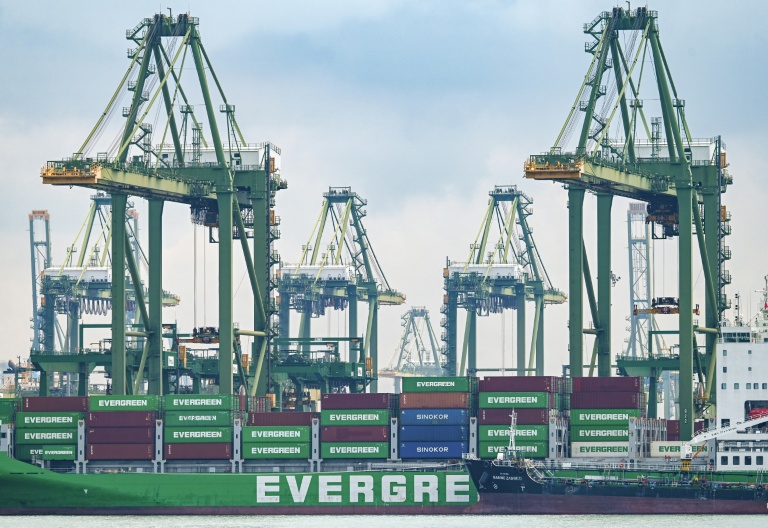Business
Singapore’s Exports Decline as US and China Shipments Drop

Singapore’s exports experienced a significant decline in August 2025, driven by reduced shipments to its largest markets, the United States and China. Official figures released by Enterprise Singapore reveal that non-oil domestic exports fell by 11.3 percent compared to the previous year, marking a sharper decline than the 4.7 percent decrease recorded in July 2025.
The downward trend in exports is largely attributed to ongoing trade tensions between the United States and China, which have led to reciprocal tariffs and disruptions in global supply chains. These tensions have had a pronounced effect on Singapore, a country heavily reliant on trade, particularly as it navigates a 10 percent baseline tariff imposed by US measures.
Significant Drops in Key Export Categories
Shipments to the United States plummeted by nearly 29 percent in August, extending a staggering 42.8 percent decline observed in July. The sharp downturn was evident across various sectors, with exports of food preparations, including sauces, falling by 97.1 percent. Additionally, specialised machinery shipments decreased by 71.3 percent, and disk media products saw a 60 percent drop.
Exports to China also saw a considerable contraction, shrinking by 21.5 percent, which was steeper than the 12.3 percent reduction in July. Key components affected included specialised machinery, which fell by nearly 42 percent, and integrated circuits, which decreased by 36.8 percent. Notably, the export of non-monetary gold, used for industrial purposes, plunged by 96.1 percent.
Impact of Global Economic Conditions
Rajiv Biswas, Chief Economist at Asia Pacific Economics, highlighted the various factors contributing to the decline. He stated, “The drop in Singapore’s exports reflected a range of factors, notably the disruption to world trade and export supply chains caused by steep new US tariff measures.” He also pointed out that China’s slower economic growth and weaker retail sales in the third quarter contributed to reduced imports from Singapore.
Despite these challenges, Singapore recently adjusted its 2025 economic growth forecast to between 1.5 percent and 2.5 percent, an increase from the previous estimate of 0.0 percent to 2.0 percent. Nevertheless, authorities caution that the outlook for the remainder of the year remains uncertain, heavily influenced by international trade dynamics and the implications of US tariffs.
As Southeast Asia’s second-largest economy, Singapore’s vulnerability to global economic fluctuations underscores the critical importance of its trade relationships, particularly with its largest partners, the US and China.
-

 Education3 months ago
Education3 months agoBrandon University’s Failed $5 Million Project Sparks Oversight Review
-

 Science4 months ago
Science4 months agoMicrosoft Confirms U.S. Law Overrules Canadian Data Sovereignty
-

 Lifestyle3 months ago
Lifestyle3 months agoWinnipeg Celebrates Culinary Creativity During Le Burger Week 2025
-

 Health4 months ago
Health4 months agoMontreal’s Groupe Marcelle Leads Canadian Cosmetic Industry Growth
-

 Science4 months ago
Science4 months agoTech Innovator Amandipp Singh Transforms Hiring for Disabled
-

 Technology4 months ago
Technology4 months agoDragon Ball: Sparking! Zero Launching on Switch and Switch 2 This November
-

 Education4 months ago
Education4 months agoRed River College Launches New Programs to Address Industry Needs
-

 Technology4 months ago
Technology4 months agoGoogle Pixel 10 Pro Fold Specs Unveiled Ahead of Launch
-

 Business3 months ago
Business3 months agoRocket Lab Reports Strong Q2 2025 Revenue Growth and Future Plans
-

 Technology2 months ago
Technology2 months agoDiscord Faces Serious Security Breach Affecting Millions
-

 Education4 months ago
Education4 months agoAlberta Teachers’ Strike: Potential Impacts on Students and Families
-

 Education3 months ago
Education3 months agoNew SĆIȺNEW̱ SṮEȽIṮḴEȽ Elementary Opens in Langford for 2025/2026 Year
-

 Science4 months ago
Science4 months agoChina’s Wukong Spacesuit Sets New Standard for AI in Space
-

 Business4 months ago
Business4 months agoBNA Brewing to Open New Bowling Alley in Downtown Penticton
-

 Business4 months ago
Business4 months agoNew Estimates Reveal ChatGPT-5 Energy Use Could Soar
-

 Technology4 months ago
Technology4 months agoWorld of Warcraft Players Buzz Over 19-Quest Bee Challenge
-

 Business4 months ago
Business4 months agoDawson City Residents Rally Around Buy Canadian Movement
-

 Technology4 months ago
Technology4 months agoFuture Entertainment Launches DDoD with Gameplay Trailer Showcase
-

 Technology2 months ago
Technology2 months agoHuawei MatePad 12X Redefines Tablet Experience for Professionals
-

 Top Stories3 months ago
Top Stories3 months agoBlue Jays Shift José Berríos to Bullpen Ahead of Playoffs
-

 Technology4 months ago
Technology4 months agoGlobal Launch of Ragnarok M: Classic Set for September 3, 2025
-

 Technology4 months ago
Technology4 months agoInnovative 140W GaN Travel Adapter Combines Power and Convenience
-

 Science4 months ago
Science4 months agoXi Labs Innovates with New AI Operating System Set for 2025 Launch
-

 Technology4 months ago
Technology4 months agoNew IDR01 Smart Ring Offers Advanced Sports Tracking for $169










